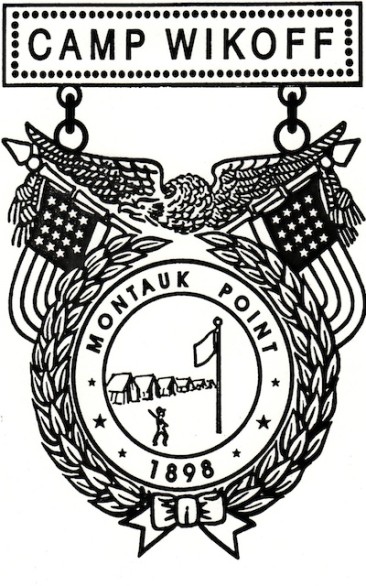CAMP WIKOFF
NATIONAL MILITARY PARK PROPOSAL
~~~~~~~~~~~~~~~~~~~~~~~~~~~~~~~~~~~~~~~~~~
Camp Wikoff, Montauk, 1898
August 4 / October 9, 1898
In the summer of 1898, a military encampment was established on 4,000 acres of hilly, treeless terrain in Montauk for the rest and recuperation of the US Fifth Army Corps in preparation for the fall military campaign against Havana during the Spanish American War.
Major General Shafter’s Fifth Army Corps, including Roosevelt’s Rough Riders, had defeated Spanish forces in battles near Santiago de Cuba in June and July, but thousands of soldiers, who had spent weeks in the hot, humid Cuban chaparral, suffered from malaria, typhoid, yellow fever and dysentery.
On August 4th, Sec. of War Alger ordered the immediate transfer of 22,500 soldiers in Cuba, and 7,000 soldiers at southern posts, to Montauk, chosen for its northern latitude, isolation, train service, and naturally deep water harbor at Fort Pond Bay.
On August 12th, shortly after the first troops from southern posts began to arrive in Montauk by train, and as transports began the seven-day voyage from Santiago de Cuba, a Protocol of Peace was signed in Paris, bringing hostilities between Spain and the United States to an end.
In anticipation of the fever-stricken troops that would be arriving from southern posts and Cuba, a 500-bed General Hospital and a 250-bed Detention Hospital were established in Montauk. The number of fever-stricken soldiers – three quarters of the troops returning from Cuba — far exceeded the capacity of those hospitals, and army provisions were unsuited to the soldiers’ dietary needs. Tragically, 357 died at Camp Wikoff, mainly of dysentery, malaria and typhoid. Reports of conditions at Camp Wikoff, some exaggerated by yellow journalism, began to appear in newspapers across the country, and soon Camp Wikoff was labeled a ‘pest hole’. Editorials began to demand that President McKinley replace Secretary of War Alger for his failure to anticipate the needs of the returning troops.
The number of beds was increased in the camp hospitals; the American Red Cross was contracted by the US Government to supply nurses; food delicacies were delivered to the camp from local sources, as well as supplies from New York City, the North Fork, Old Stonington and Newport. As a result, conditions at Camp Wikoff gradually improved.
On Saturday, September 3rd – “Montauk’s Great Day” – President William McKinley toured camp hospitals and addressed 5,000 cheering troops on Montauk’s Great Plain, telling them, “I bring you the gratitude of the nation, to whose history you have added by your valor a new and glorious page.”
On September 13th, Col. Theodore Roosevelt bid farewell to the Rough Riders, telling them, “You cannot imagine how proud I am of your friendship and regard.”
In appreciation of his leadership, the Rough Riders presented him with Frederic Remington’s Bronco Buster statue.
On September 26th, General Wheeler, commander of the camp from August 19 to September 4th, said this of Camp Wikoff: “I think the camp was well laid out, considering the rapidity with which it had to be constructed. When Camp Wikoff was most populous, there were twenty-eight square miles of tents, and the scene presented was most beautiful.”
On October 9th, Sec. of War Alger ordered the Seventh Infantry to report to posts in Michigan, thus effectively bringing to a close the great military encampment at Montauk.
************************************************
The troops returning home at Fort Pond Bay that summer were America’s first veterans of a war fought overseas on foreign soil, a seminal event in military history, as American troops liberated a foreign population from colonial rule, enforcing a policy that has continued, through successive military campaigns, to this day.
~~~~~~~~~~~~~~~~~~~~~~~~~~~~~~~~~~~~~~~~~~~~~~~~~~~~~~~
“The brave officers and men who fell in battle and those who have died from exposure and sickness will live in immortal story, and their memories will be perpetuated in the hearts and histories of a generous people; and those who were dependent upon them will not be neglected by the Government for which they so freely sacrificed their lives.”
— President William McKinley, Camp Wikoff, September 3, 1898
~~~~~~~~~~~~~~~~~~~~~~~~~~~~~~~~~~~~~~~~~~~~~~~~~~~~~~~
CAMP WIKOFF NATIONAL MILITARY
PARK Proposal
TO HONOR
US Fifth Army Corps, which returned home at Fort Pond Bay, directly from Santiago de Cuba, following a victorious campaign against Spanish forces in Cuba, June & July, 1898.
American Red Cross (founded 1881), which first fulfilled its mission in the Spanish-American War, supplying nurses to the hospitals at Camp Wikoff. It was the first time the US Government contracted with the American Red Cross to aid in the care of soldiers. And, the first time women nurses worked in army hospitals, ending the all male nurse policy.
Civilian Volunteers – those who volunteered to serve in the military campaign and those who came to the aid of the fever-stricken troops.
Veterans of Foreign Wars
“To prevent such suffering in the future, 13 vets of the 17th Infantry Regiment, which had been at Camp Wikoff, went on to form the American Veterans of Foreign Service in Columbus, Ohio, a forerunner of the VFW.”
— “Agony of Camp Wikoff” by Vietnam Veteran Gary Turbak, VFW Magazine, September, 1998
——————————————–
NATIONAL HISTORIC SIGNIFICANCE
Soldiers of the Fifth Army Corps were America’s first veterans of a foreign war fought overseas on foreign soil to return home.
Camp Wikoff meets the criteria for National Military Park status: historic significance, prominent figures in American history (President William McKinley, Colonel Theodore Roosevelt, General William Shafter, General Joseph Wheeler), historic site, historic structure (Third House), and feasibility.
As the tenth national military park, CW NMP would complete the national military park system as originally conceived. The Spanish American War and all subsequent wars have been fought overseas, and, like the Spanish American War, have been wars of liberation. Camp Wikoff, established during the war (last several weeks), made it part of the war effort, marking the transition from US mainland wars (Revolutionary War, War of 1812 and Civil War) to wars fought overseas.
——————————————–
This proposal received the support of Brigadier General Patrick Finnegan,
Dean of West Point in a letter dated March 4, 2008.
“Camp Wikoff played an important role in the American war with Spain in 1898. In many ways the Camp reflected the spirit of the times, especially with regard to volunteerism and the Progressive impulse of the late-19th and early 20th centuries. Through its gates passed thousands of heroic Americans—military and civilian, famous and ordinary—whose commitment and sacrifice brought victory in the war. For these reasons and the many others you outline in the proposal, we support your cause and encourage you to continue pursuing the project.”
— Patrick Finnegan, Brigadier General, US Army, Dean of the Academic Board, U.S. Military Academy, West Point
~~~~~~~~~~~~~~~~~~~~~~~~~~~~~~~~~~~~~~~~~~~~~~~
This proposal calls for a unique component, overlay, cooperative park system – comprised of existing parklands & preserves – with the addition of museums, monuments/markers, campsites, trails, gardens and kiosks/pavilions.
~~~~~~~~~~~~~~~~~~~~~~~~~~~~~~~~
PROPOSED PARK OVERLAY COMPONENTS
Fort Pond Bay / Beach
Memorial Gardens & Walkway (LIRR)
Montauk Station
Montauk Village Green
Montauk Downs
Shadmore State Park
Roadside / Rita’s Stables
Ditch Plains / Beach
Third House
Montauk Point State Park
*****************************
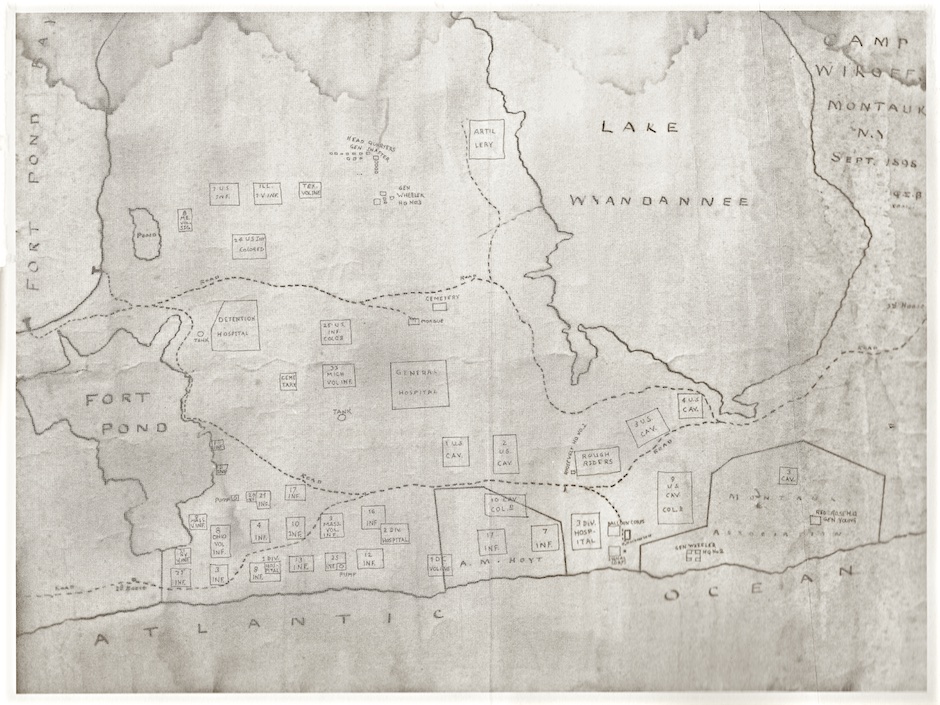
Archival Map of Camp Wikoff, September, 1898. Courtesy of Montauk Historical Society.
~~~~~~~~~~~~~~~~~~~~~~~~~~~~~~~~~~~~~~~~~~~~~~~~~~~~~~~~~~
 Fort Pond Bay at approximate location of the Iron Pier. Photo, 2014.
Fort Pond Bay at approximate location of the Iron Pier. Photo, 2014.
FORT POND BAY



——————————————————
MEMORIAL GARDEN & WALKWAY
Memorial Garden & Walkway from Iron Pier at Fort Pond Bay to Montauk Station, with Memorial Gardens at the station & along the walkway dedicated to Gen. Shafter’s Fifth Army Corps.
““““““““““““““““““““
Note that this proposal for a Memorial Walkway was reviewed by James Dermody, President of the Long Island Rail Road in 2006. In his letter, he stated that the proposal would have to be further reviewed by several departments of the LIRR; and arrangements would have to be made regarding liability and maintenance, but would be considered.
It should be further noted that Camp Wikoff was the greatest event in the history of the Long Island Rail Road. Thirty-five thousands troops, tens of thousands of visitors, hundreds of horses and mules, and tons of supplies were transported flawlessly by the Long Island Rail Road during the encampment. The Long Island Rail Road also added a rail spur to the Iron Pier to accommodate the movement of supplies.
——————————————————
MONTAUK STATION
Montauk Station: 7,000 soldiers arrived by train at Montauk Station from southern military posts. Virtually all soldiers in camp – 29,500 – left camp by train. Thousands of visitors and tons of supplies arrived by train. Station, post office, general store, telephone/telegraph building, Army officers’ club, restaurant, power building, among others, comprised the ‘village’ that was built at this site during the encampment.
Visitor Center & Camp Wikoff Museum: orientation for those visiting Montauk, with gallery & exhibits, and topographical map of Campgrounds.
Pullman Presidential Car: vintage rail car, decorated as Presidential McKinley’s Presidential Car. He was accompanied by Assistant Sec. Cortelyou, Vice President Hobart, Sec. of War Alger, Attorney General Griggs, Senator Proctor of Vermont, among others. He stayed in the Presidential cars overnight on September 2nd at the Amagansett Railroad Station, prior to his visit.
Spanish American War Museum, at Montauk Station or near the Village Green.
——————————————————
MONTAUK VILLAGE GREEN
Montauk Village Green: Statue / Monument to President William McKinley, who addressed the soldiers of the Fifth Army Corps on September 3, 1898, welcoming them home and praising their accomplishments.
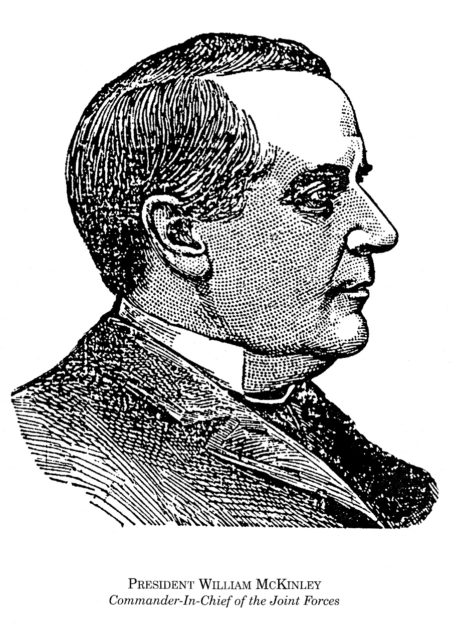
“I am honored to meet the brave men who stand before me to-day. I bring you the gratitude of the nation, to whose history you have added by your valor a new and glorious page. You have come home after two months of severe campaigning, which has embraced assault, siege and battle — so brilliant in achievement, so far-reaching in results as to earn the unstinted praise of all your countrymen….To the Army and Navy, to the Marines, to the regulars, to the volunteers, and to that Providence which has watched over them all, the nation to-day is full of thanksgiving and praise….”
— President William McKinley, Great Plain, Montauk, Saturday, September 3, 1898
———————————————-
MONTAUK DOWNS
Montauk Downs: approximate location of General Hospital.
Monument to the American Red Cross, Women’s National War Relief Association,
East Hampton Relief Corps, as well as individual volunteers.
——————————————————
SHADMORE STATE PARK
Shadmoor State Park: Campsite of the First D.C. Volunteers, Seventh Infantry, 10th Cavalry (Buffalo Soldiers under the command of First Lieutenant John J. Pershing) and 17th Infantry.
Pavilion, dedicated benches & camp information plaque.
— Monument to the VFW – originally formed by soldiers of the 17th Infantry, largely in response to conditions at Camp Wikoff.
——————————————————

DITCH PLAINS
Ditch Plains: Headquarters No. 2 of General Joseph Wheeler.
— Monument to General Joseph Wheeler; his daughter, Laurie; and his sons, Thomas and Joseph. General Wheeler, who served as Commander of Camp Wikoff from August 19 to September 4, established his second headquarters at Ditch Plains.
Wheeler graduated from West Point, rose to the rank of general in the Confederacy, then to rank of general in the United States Army, becoming, as a result, a symbol of the reunification of the country following the Civil War. General Wheeler’s family home — Pond Spring — is a historic site in Alabama. General Wheeler also served in the US House of Representatives for sixteen years.
Gen. Wheeler’s younger son, Naval Cadet Thomas H. Wheeler, drowned off Ditch Plains on September 7th, as he tried to save his friend, Second Lieutenant Newton D. Kirkpatrick.
——————————————————
ROADSIDE MONUMENT / RITA’S STABLES
Rita’s Stables: Roadside monument to the Rough Riders. Site of Rough Rider encampment, Roosevelt’s ‘Bully Pulpit’ & farewell speeches. And, where Col. Roosevelt announced that he would accept the Republican Gubernatorial Nomination, if offered to him. The regiment, numbering approximately 1,000 troops, camped at this site.
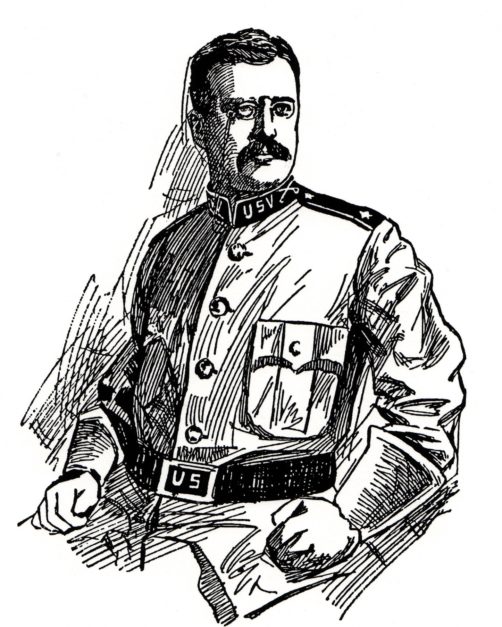
Colonel Theodore Roosevelt
——————————————
On September 13, 1898, Col. Roosevelt bid his men farewell, saying,
“You cannot imagine how proud I am of your friendship and regard.”
——————————————————
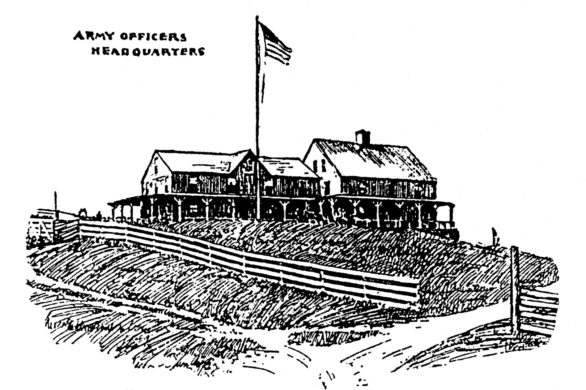
THIRD HOUSE
Third House, Montauk County Park: headquarters of General Young during the first few weeks of Camp Wikoff. Inn for Officers. Col. Roosevelt stayed overnight on August 18 & 19th, 1898; his wife and daughters stayed there September 7th & 8th. Roosevelt met with Lemuel Quigg, Senator Thomas Platt’s emissary, to discuss possible Republican Gubernatorial candidacy. At that meeting, Roosevelt said that he would accept the nomination if offered to him, but would not say so publicly until mustered out of service.
 Monument to Spanish American War – a war that liberated the Cuban people from 400 years of colonial rule.
Monument to Spanish American War – a war that liberated the Cuban people from 400 years of colonial rule.
 Statue / Monument to Roosevelt’s Rough Riders.
Statue / Monument to Roosevelt’s Rough Riders.
 Reconstruction of original barn near Third House for Rough Rider Museum.
Reconstruction of original barn near Third House for Rough Rider Museum.
 Army officer platform tent campsites.
Army officer platform tent campsites.
 Army wagon, and related carriage, displays/rides.
Army wagon, and related carriage, displays/rides.
 Bugle, Flag Signaling Demonstrations, and Army Band Performances (of 1898 songs).
Bugle, Flag Signaling Demonstrations, and Army Band Performances (of 1898 songs).
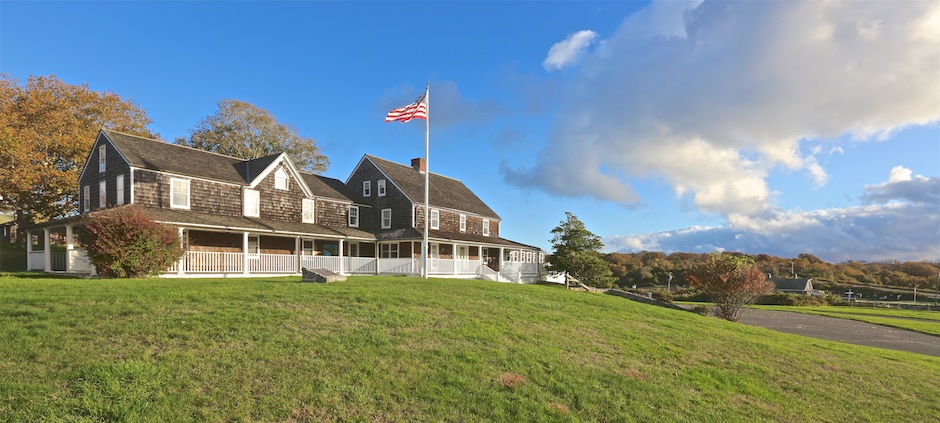
Third House, 2014.
———————————————————
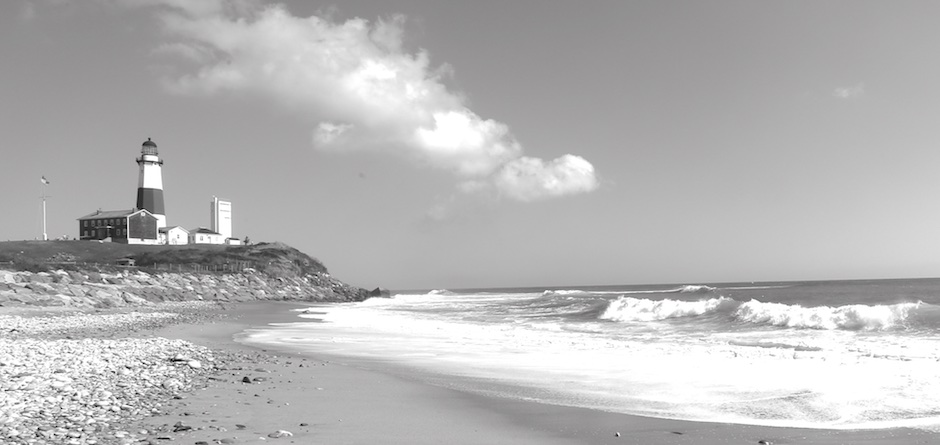 Montauk Point, 2014.
Montauk Point, 2014.
MONTAUK POINT STATE PARK & LIGHTHOUSE
Montauk Point State Park & Lighthouse: visited by hundreds of troops during the encampment, including Col. Theodore Roosevelt (September 6).


~~~~~~~~~~~~~~~~~~~~~~~~~~~~~~~~~~
Off Site Markers:


~~~~~~~~~~~~~~~~~~~~~~~~~~~~~~~~~~~~~~~~~~~~~~~~~~~~~~~~~~~
ANNUAL CONFERENCE / Last weekend in April —
-
Spanish American War (declared on April 21, 1898 / Armistice Proclamation August 13, 1898 / Peace Treaty December 10, 1898).
-
Tropical Fevers — malaria, yellow fever, typhoid / past & present — and Quarantine
-
Camp Wikoff: US Fifth Army Corps, VFW, American Red Cross & Citizen Volunteers.
-
Theodore Roosevelt and the New York State 1898 Gubernatorial Campaign.
-
1st United States Volunteer Cavalry: Rough Riders
-
Cuba, then & now.
-
United States’ Foreign Relations / Overseas Military Bases
——————————————————————-
RE-ENACTMENTS, ACTIVITIES, ANNUAL EVENTS






~~~~~~~~~~~~~~~~~~~ NOTE ~~~~~~~~~~~~~~~~~~
Note on Transportation: The Long Island Rail Road played a significant role at Camp Wikoff, flawlessly transporting tens of thousands soldiers & civilians, horses & mules, and tons of supplies.
This would be the most appropriate means of transportation to and from Camp Wikoff National Military Park, whether traveling from New York City or East Hampton.
Train cars could be outfitted as they were at the time, and with popular songs of the era. Also, Pullman Presidential Train Car, outfitted like the one in which President McKinley traveled, could be on permanent display at Montauk Station.
Army wagons and shuttle buses would transport visitors to the related historic sites. Bicycles would also be available to rent (bicycling was a very popular activity in 1898).
Note on Cuba: Voyages from Santiago de Cuba to Fort Pond Bay, retracing the sea route of the Fifth Army Corps returning home to Fort Pond Bay.
In 1956, during the Eisenhower administration, a ‘Sister City’ relationship was established between East Hampton and Playa (a borough of Havana), Cuba. See Sister Cities International for more information.
~~~~~~~~~~~~~~~~~~~~~~~~~~~~~~~~~~~~~~~~~~~~~~~~~~~~~~~~~~~~~~
— Camp Wikoff National Military Park — Proposed by Jeff Heatley, June, 2016. Editor of BULLY! Colonel Theodore Roosevelt, The Rough Riders & Camp Wikoff, Montauk, New York – 1898. A Newspaper Chronicle. 509 pages.Published by the Montauk Historical Society & the Pushcart Press, 1998. Second Edition published 2023 by the Montauk Historical Society & East End Press, with a Grant from the Gardiner Foundation.
Visit: BULLY! Colonel Theodore Roosevelt, The Rough Riders & Camp Wikoff, Montauk — 1898
For Camp Wikoff Portfolios (select illustrations & text pages from BULLY!), please check the following links:
— Camp Wikoff / Portraits August, 1898
— Camp Wikoff / Portraits September – December 1898
— Camp Wikoff, Montauk Point: Illustrations / August, 1898
— Camp Wikoff, Montauk Point: Illustrations / September & October, 1898
— Camp Wikoff / Quarantine Camp, Montauk, 1898
— Camp Wikoff: Gen. Shafter’s Fifth Army Corps / Montauk, 1898 / Illustrated
— Or, reference BULLY!
~~~~~~~~~~~~~~~~~~~~~~~~~~~~~~~~~~~~~~~~~~~~~~~~~~~~~~~~~~~~~~~~~~~~~~~~~~~~~~~~
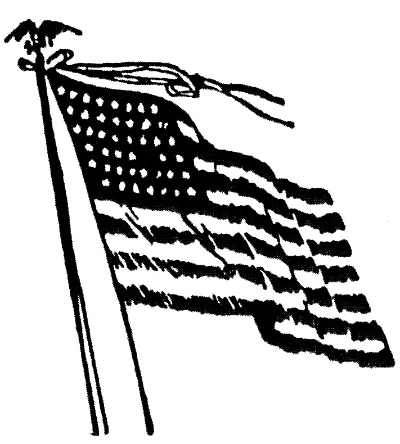
One Flag, One Cause, One Country.
Report of the War Commission
“In concluding its labors, it is with much pleasure that the commission reports that notwithstanding the haste with which the Nation entered upon the war with Spain, the resulting and almost inevitable confusion in bureau and camp, the many difficulties of arming, assembling and transporting large bodies of hitherto untrained men, the carrying on of active operations in two hemispheres, the people of the United States should ever be proud of its soldiers, who, co-operating with its sailors, in less than three months put an end to Spanish colonial power, enfranchised oppressed people, and taught the world at large the strength and nobility of a great Republic.”
New York Times, February 13, 1899
——————————————————————–
Illustrations
President William McKinley. Boston Globe, September 4, 1898.
General Joseph Wheeler. Boston Globe, August 16, 1898.
Colonel Theodore Roosevelt. The Traveler (North Fork), November 11, 1898.
Third House. New York Herald, August 16, 1898.
‘One Flag, One Cause, One Country. Chicago Tribune, Masthead.
~~~~~~~~~~~~~~~~~~~~~~~~~~

AAQ Exclusive Portfolio.
______________________________________________________________________________________________

